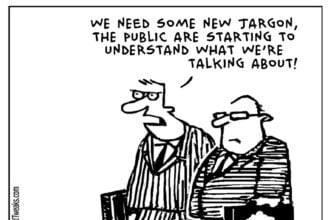2. Business users wouldn’t know what to do with decision automation if they had it
“My business users don’t want to get involved”
“But I can’t get users to tell me the rules now”
“I don’t want the users telling us how to do our jobs”
The first reaction to decision automation technology from some IT folks is that their business users would not want to be involved. Some IT folks worry that engaging the business in the process of defining rules is tantamount to having business people tell IT how to do their jobs. Neither concern is warranted.
2. Business users wouldn’t know what to do with decision automation if they had it
“My business users don’t want to get involved”
“But I can’t get users to tell me the rules now”
“I don’t want the users telling us how to do our jobs”
The first reaction to decision automation technology from some IT folks is that their business users would not want to be involved. Some IT folks worry that engaging the business in the process of defining rules is tantamount to having business people tell IT how to do their jobs. Neither concern is warranted.
So, do business users want to be involved? Well they don’t want to “write code” so simply exposing the business rules to them is not enough. Decision automation must be delivered in the context of their work – they must be able to “relax the underwriting policy” or “promote slow moving products”. If you can give them an environment where changing the rules feels like part of their day to day job, fits in the context of what they want to achieve and does not require them to learn a new interface or language then they will participate. There must be a good “cognitive fit” for the decision automation or it won’t help.
For those who feel that their business users can’t tell them the rules now there are two recommendations. Firstly consider if they can’t or won’t tell you. Sometimes the business users have become completely disillusioned with the process to the point where they just can’t be bothered – they won’t tell IT their requirements because they don’t see the point. The system won’t do what they need anyway because IT won’t understand or won’t keep up with changing requirements. Changing the “toss requirements over the wall” mindset to one of collaboration, empowered by a shared understanding of the business rules, takes time and effort but business users who feel they can really impact the end result are much more likely to try and get their requirements across. Business users who can actually control some of the rules, who have a system that understands what kinds of rules they need and let’s them manage them directly will likely participate.
As for those who can’t tell you, this is either an issue of competence or of time. Adopting business rules won’t make your business users any smarter and won’t reduce their workloads. Fixing these issues is outside the scope of decision automation.
So is adopting decision automation technology the same as having the business tell IT how to do their jobs? Will being rule-driven just make the problems between the business and IT worse by confusing who does what? Should the IT department resist the adoption of technology that will bring the business closer to projects?
Well IT departments that enjoy maintenance work and indeed prefer doing maintenance to developing cool new applications should certainly avoid this technology. So should those who don’t care about their contribution to the company’s bottom-line and those who are certain they know better than the business users how the business actually runs.
Those that would like to get systems into production that do what the business needs and would like to create systems that can easily evolve to meet changing requirements without significant ongoing IT investment should think about it. Decision automation technology can help the IT folks focus on their problems while empowering the business to worry about theirs.
Copyright © 2012 http://jtonedm.com James Taylor







